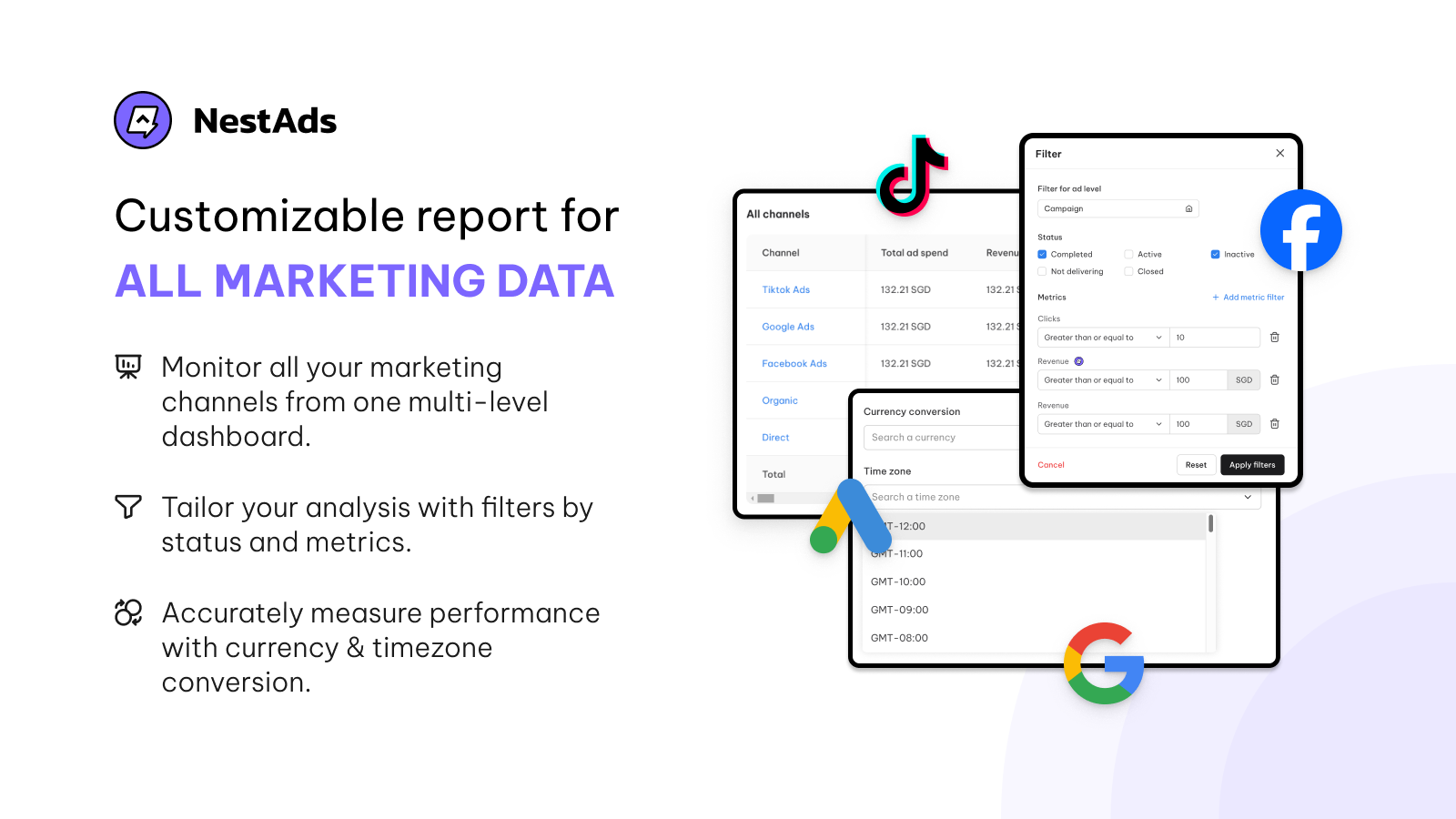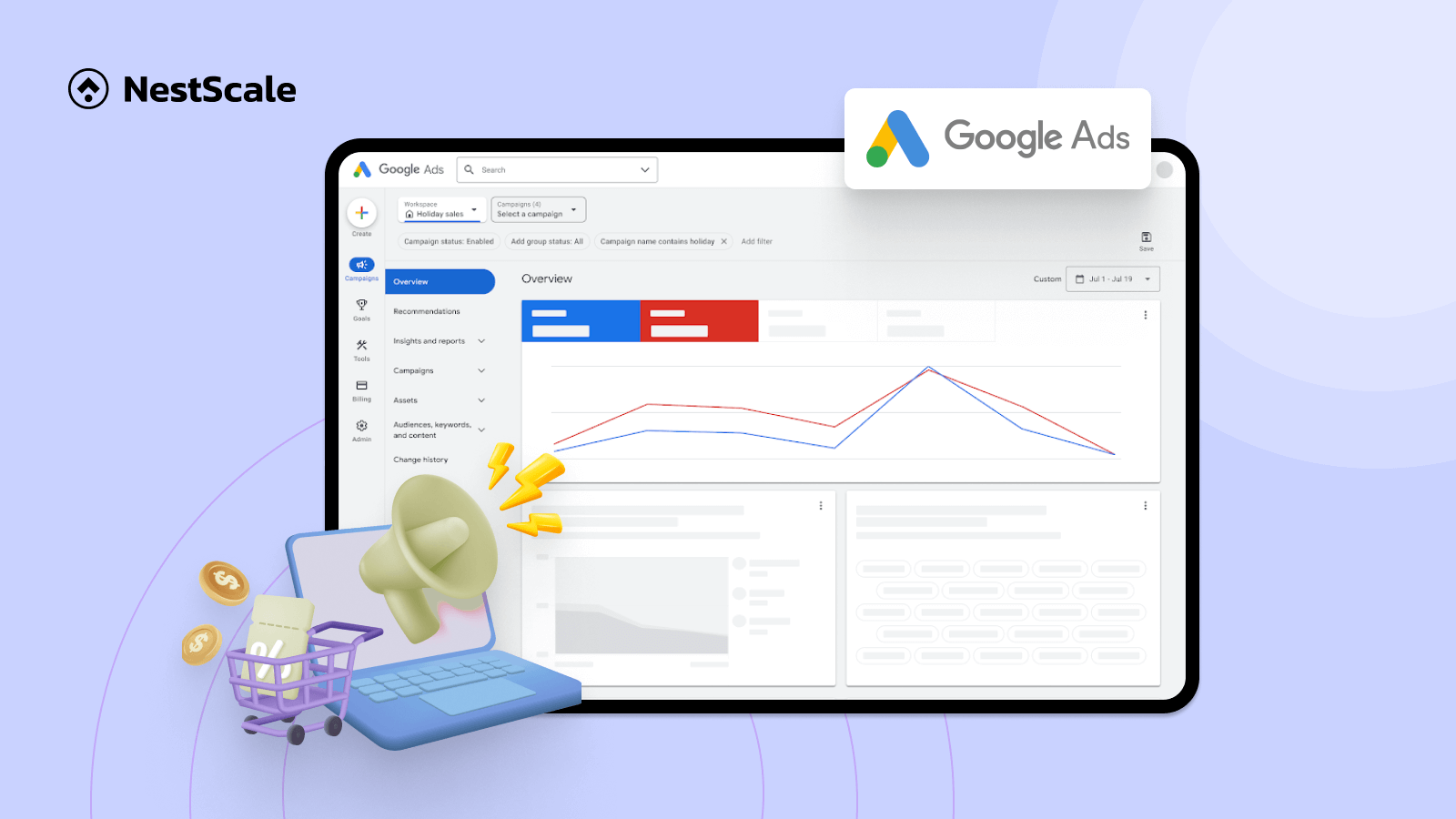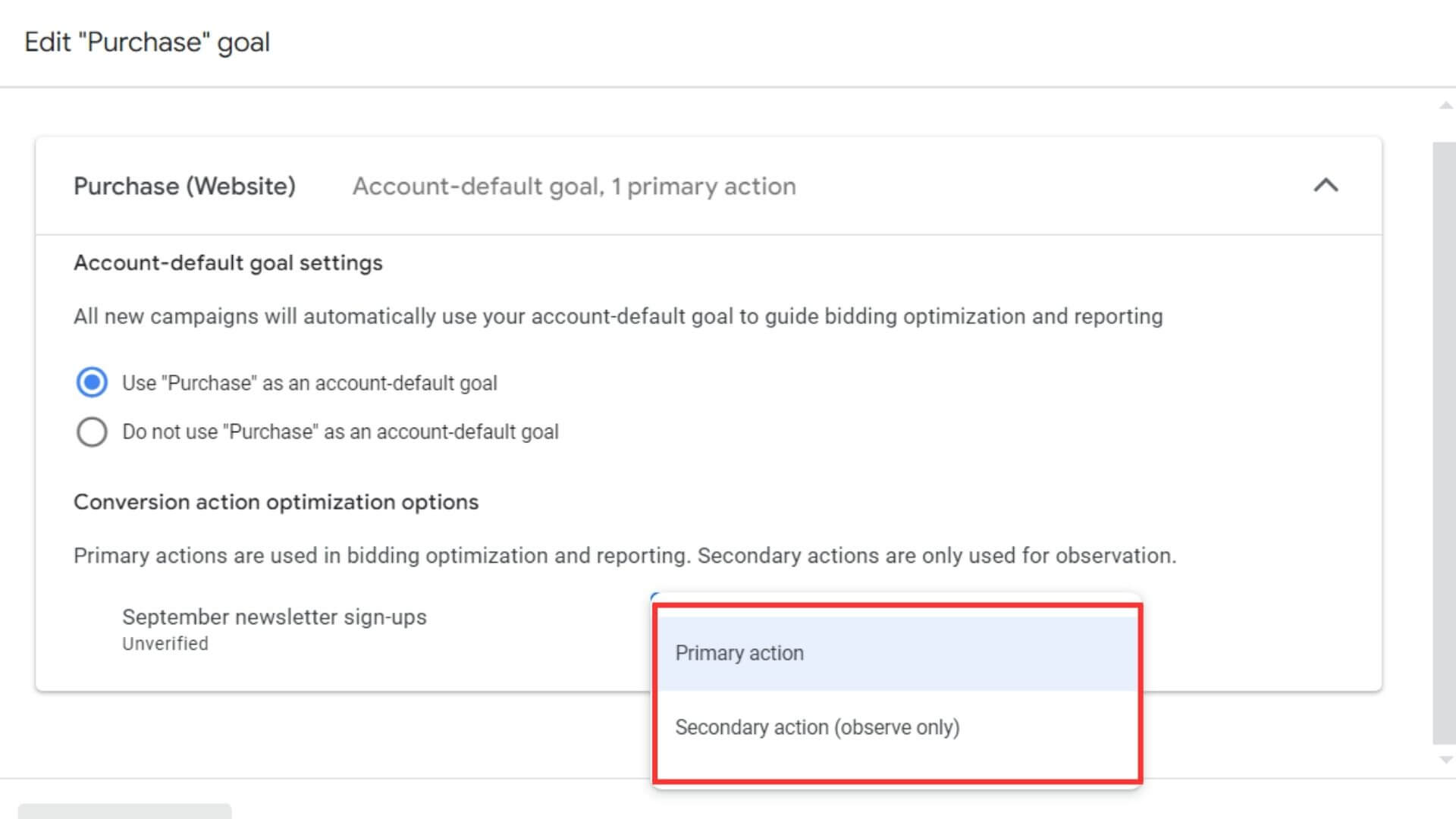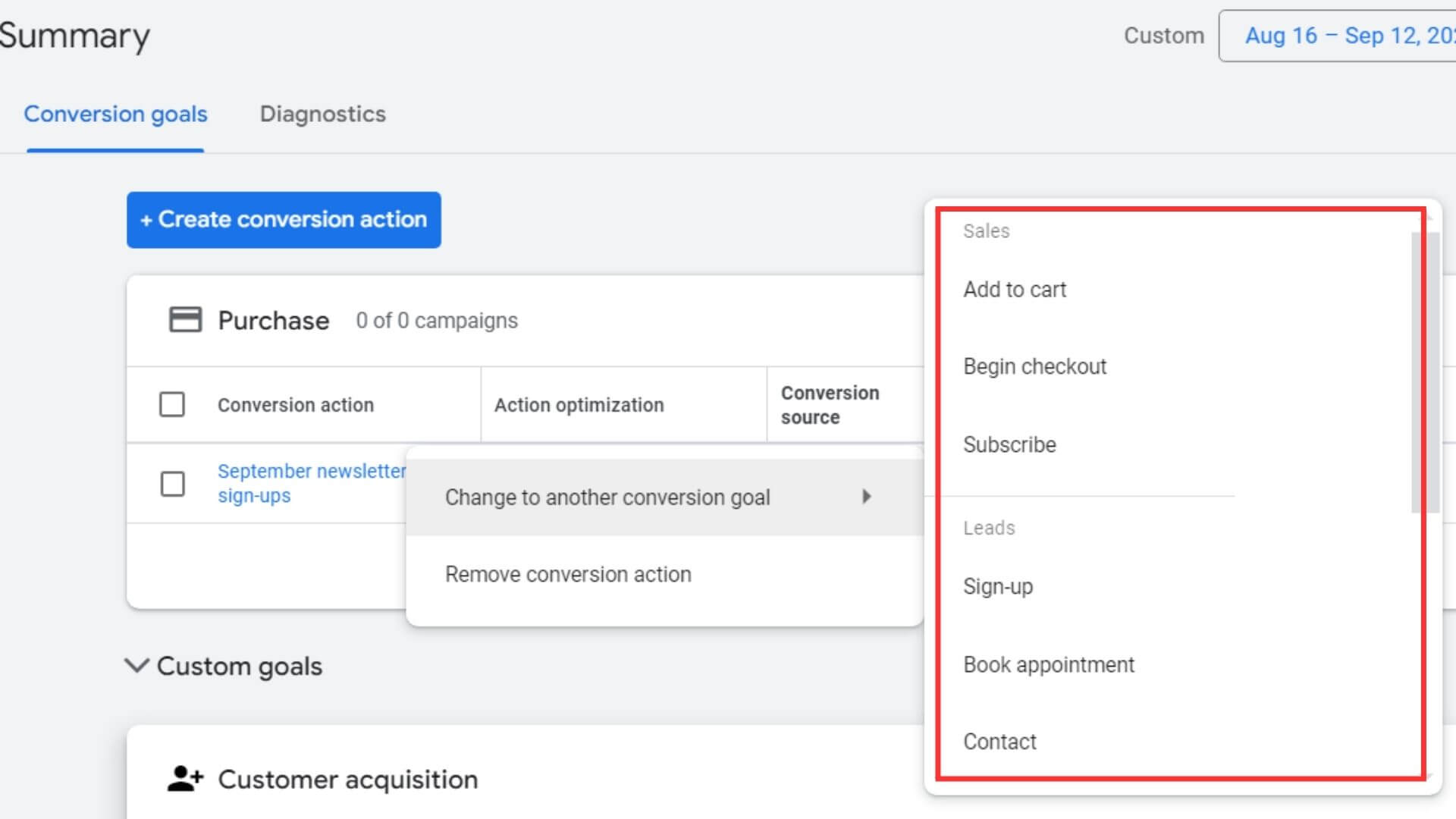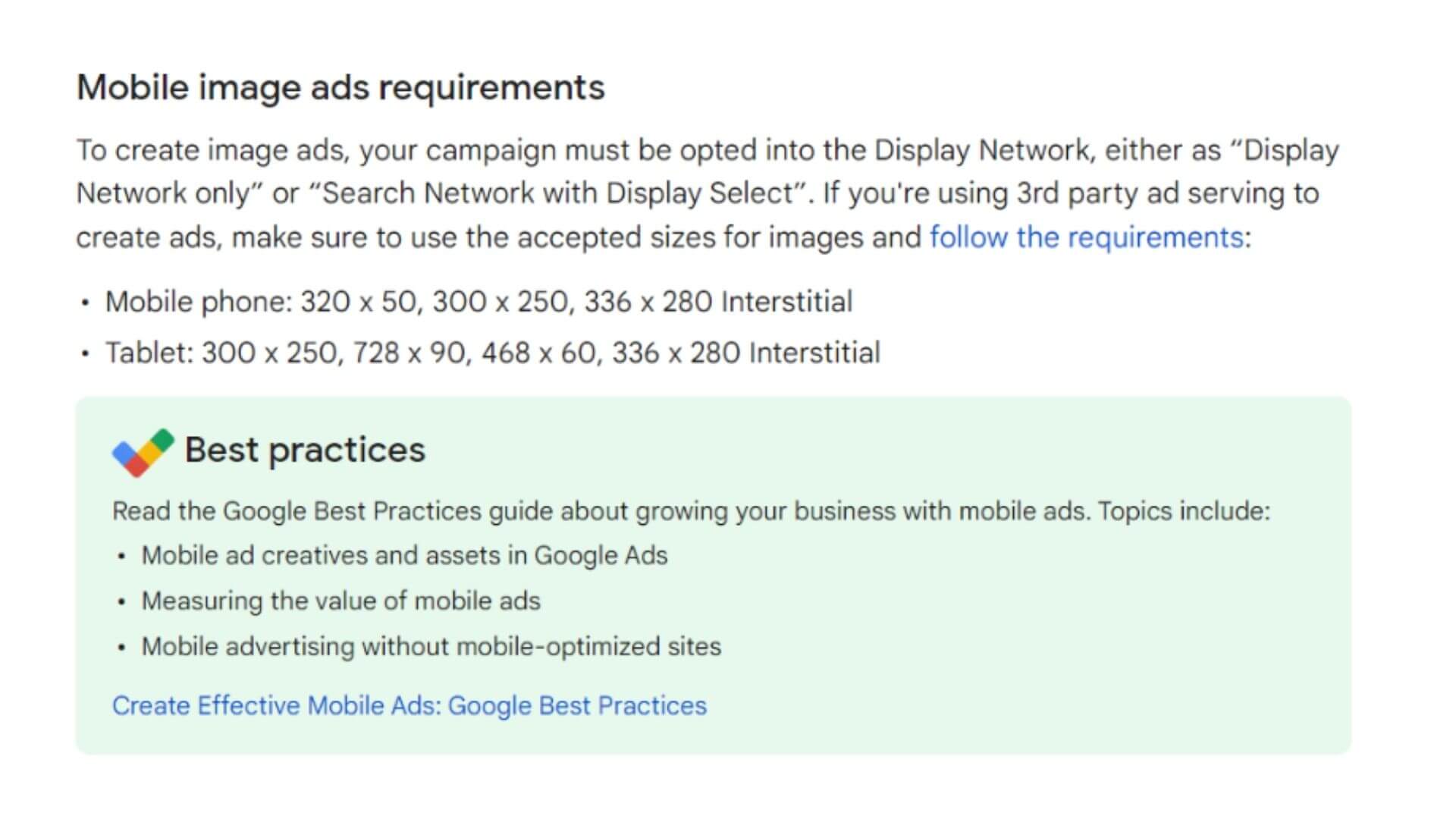With eCommerce evolving faster than ever, selling online has never been easier. You believe in your products, but how do you stand out among so many competitors in your niche? A great product isn’t enough anymore; you need a solid marketing strategy. One timeless tactic that many eCommerce businesses use is Google Ads to drive both impressions and conversions.
Google Ads has proven to be an invaluable tool for eCommerce. But how do you navigate it? How can you run Google Ads effectively without overspending? And what steps can you take to outshine your competitors?
In this guide, I’ll share 13 actionable strategies to optimize Google Ads for eCommerce. We’ll cover everything from basic principles to advanced techniques, so whether you’re experienced or just starting out, you’ll find valuable insights. Let’s dive in!
So, why Google Ads?
As you may know, Google Ads is one of the largest PPC platforms, accounting for 39% of the digital advertising market globally. With billions of searches conducted every day, Google provides businesses, especially in the eCommerce domain, with great access to potential customers.
A survey by Search Engine Land revealed that 56% of consumers take search engine results, including those from Google and other platforms, into account when deciding on purchases.
Also, 63% of consumers find new products through search engine results.
Furthermore, as of 2024, around 80% of businesses worldwide use Google Ads for their pay-per-click (PPC) campaigns.
So what do these figures say? Your target audience is actively present on Google, and your competitors are definitely using the platform. Hence, neglecting Google Ads means you’re turning away numerous potential customers who are interested in your products, and giving your competitors the opportunity to capture their attention instead.
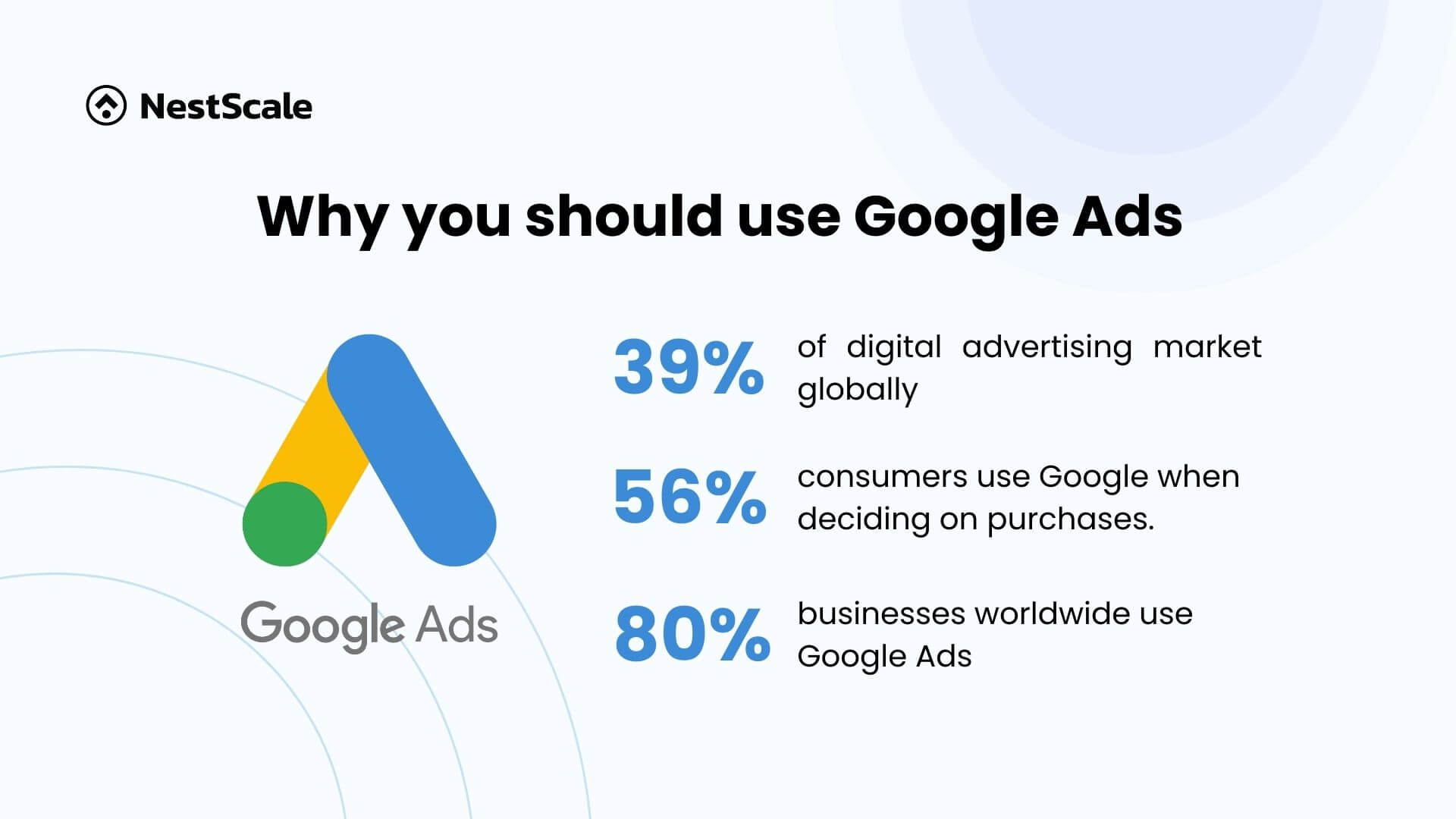
Moreover, using Google Ads allows you to reach customers who are genuinely interested in buying, giving you instant visibility for your products. Plus, Google Ads offers a variety of ad types that are perfectly suited for eCommerce, making it an excellent choice for boosting your sales.
Essential basics Google Ads for e-commerce you need to know
Before we jump into the strategies for running Google Ads in eCommerce, I want to highlight a few key points that are essential to keep in mind:
Choose the right ad types that suit your products
To run Google Ads effectively, the first thing to think about is which ad types will work best for your products and your store. Choosing the right Google Ads format can help your products reach a wider audience, boost conversions, and save you money on advertising.
Let’s take a look at some of the most common ad types you can easily manage on your own:
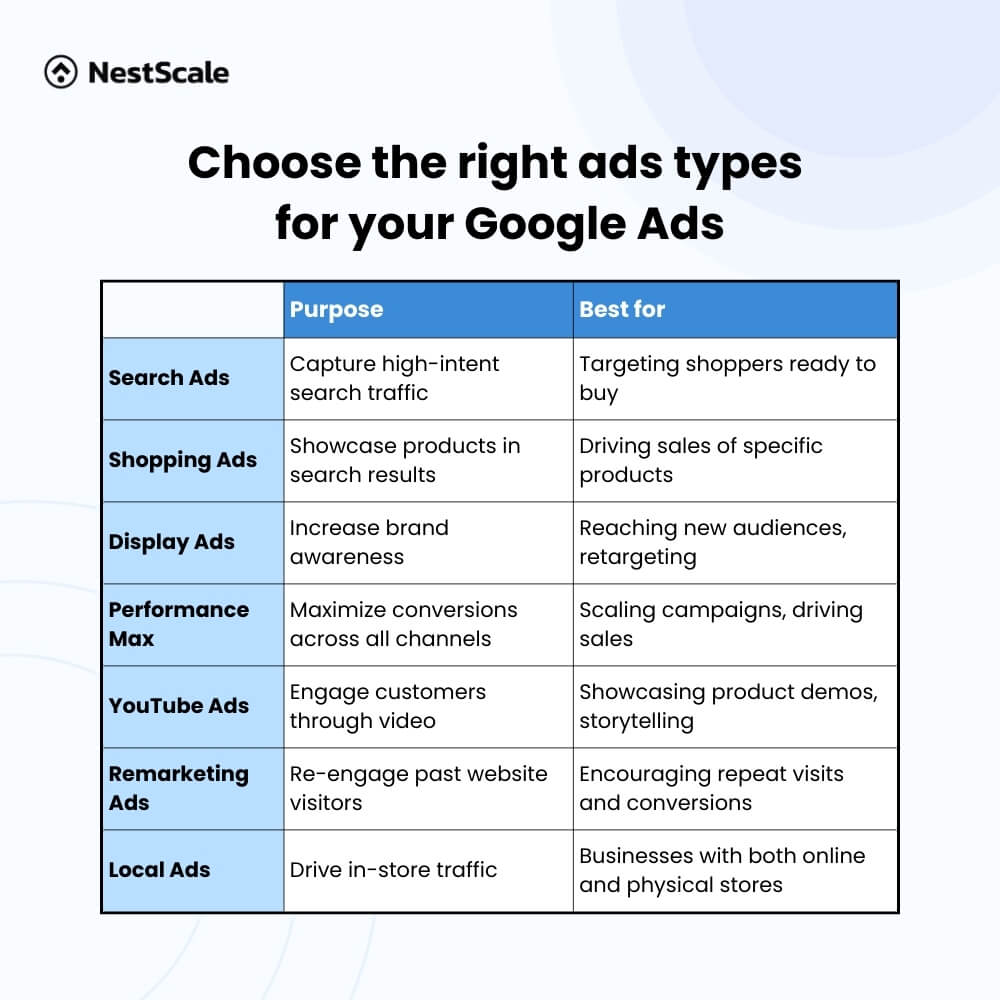
When it comes to selecting the right Google Ads type for your eCommerce business, the key is to align your strategy with your products. Each product category can benefit from different ad formats, so it’s essential to find what works best for you.
One of my go-to strategies is to start with Google Shopping campaigns. These campaigns can be incredibly effective for showcasing your best-selling SKUs.
Begin by identifying which products are performing well, and then create a detailed shopping feed that includes all relevant attributes. This will help your products stand out in search results.
Shopping ads typically deliver better results for eCommerce since they visually showcase your products directly in the search results. However, if you’re running service products or products with high-value and you have budget, then you can consider using Search Ads as well.
Remember, it’s all about testing and refining your approach to discover what resonates best with your audience.
Focus on relevant strategies
When considering a strategy or a tip for your Google Ads eCommerce campaign, you should focus on strategies that align with your broader marketing goals rather than trying to implement every available tip.
While there are numerous tactics that can boost your campaign performance, not all of them are relevant or effective for your own business model.
So, mainly focus on tips and techniques that fit within your overall strategy and reinforce your key objectives. This targeted approach helps your ad spend used efficiently and supports long-term success as well.
Be well-prepared for key selling seasons
For many merchants, the last three months of the year—the holiday season—are the most crucial for sales. In fact, some businesses can generate over 50% of their yearly revenue during this period, if not more. If your brand follows this trend, it’s essential to start planning and structuring your campaigns at least six months in advance.
When I say planning, I mean you should test your campaigns before the season starts, if possible. If your budget doesn’t allow for testing, that’s okay! This time frame gives you enough opportunity to understand your store’s performance and develop the best strategy to meet your needs.
Why six months? This time allows you to identify which product categories, or even specific SKUs, are performing well, so you can focus on boosting them.
You’ll also learn which audience segments are engaging best, allowing you to tailor your campaigns accordingly. If you notice a group of customers abandoning their carts, consider retargeting them to recover those lost sales throughout the year, ultimately boosting your total revenue.
Many brands wait until just three to four weeks before the peak sales season to seek help in doubling or tripling their revenue, but this approach can be risky.
True success often comes from a well-structured campaign that can scale gradually, rather than relying on last-minute changes.
DON’T stuff all your products into one campaign
Segmenting your products is crucial, whether you’re launching a Search or Shopping campaign. Packing all products into one campaign can lead to unrelated keywords and make it tough to identify which items are performing best.
Moreover, when it comes time to adjust budgets, it gets tricky since budgets are set at the campaign level.
Before diving into Google Ads, take a moment to define your campaign goals. Categorizing your products beforehand is essential. For example, as a scrunchies store owner, if I’m running a holiday promotion, I’d focus on collections like Winter, Sparkle, or Seasonal.
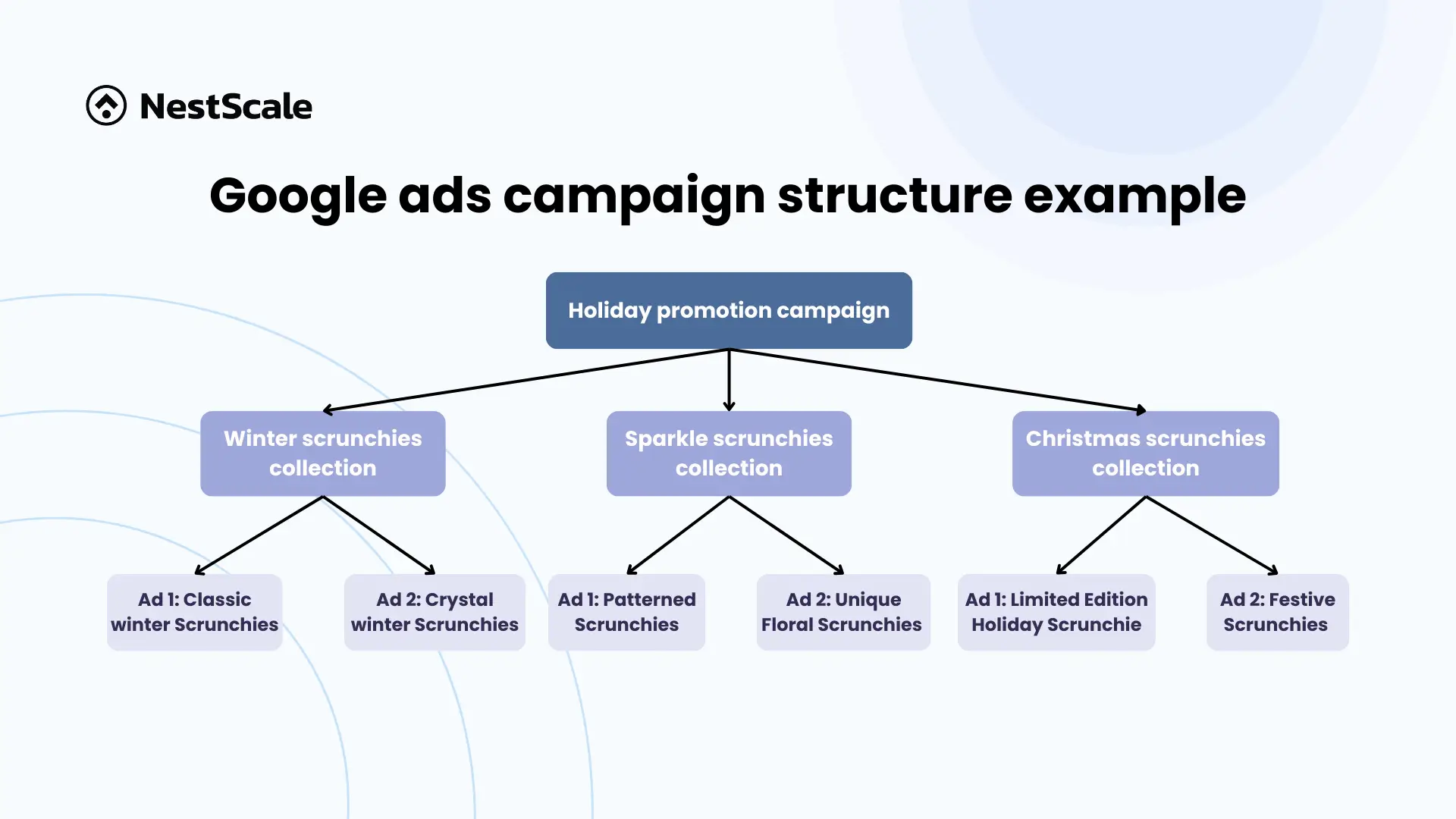
💡Here’s a tip: if you notice that certain ad groups aren’t utilizing much of your budget but are achieving good conversion rates, consider splitting them into separate campaigns. This allows those groups to receive more budget and grow.
Choosing the right products for your campaign not only helps you target the right customers but also generates more effective results.
Advanced strategies to optimize Google Ads for eCommerce
Now that you’ve got a handle on the basics, let’s dive into some advanced e-commerce strategies that can help boost your revenue. I’m excited to share actionable tips that can truly optimize your Google Ads for e-commerce businesses. Let’s explore these effective strategies together!
Customize conversion tracking for better insights
I can’t stress enough how important conversion tracking in Google Ads is. It allows you to measure the actions users take after interacting with your ads—like form submissions, phone calls, or purchases.
I’ve found that organizing these actions into categories helps immensely. It allows you to track and optimize your campaigns based on specific goals, ensuring your ads drive meaningful interactions.
💡Pro tips
- Set up primary vs. secondary conversions: Please make sure only important actions (e.g., lead forms, purchases) are set as Primary conversions. Primary conversions affect bidding strategies, so you should also avoid counting minor actions (like page views) as Primary unless necessary.
- Organize conversions into categories: You can use default categories like ‘Purchase’ or ‘Sign-Up’ for clarity. If needed, create custom categories. Proper organization simplifies campaign management and optimizes performance.
Once you’ve set up conversion tracking for your Google Ads, it’s crucial to regularly monitor the data and compare it across different channels for more accurate insights. Relying solely on Google Ads conversion tracking may lead to over-attribution of sales to Google Ads, neglecting the contributions of other channels.
To get a more comprehensive view, I recommend using Google Ads data in combination with another analytics tool like Google Analytics or any third-party solutions.
By integrating data from multiple sources, you’ll be able to make more informed decisions and get a clearer picture of what’s driving conversions. This ensures your insights are not only accurate but also actionable for optimizing future campaigns.
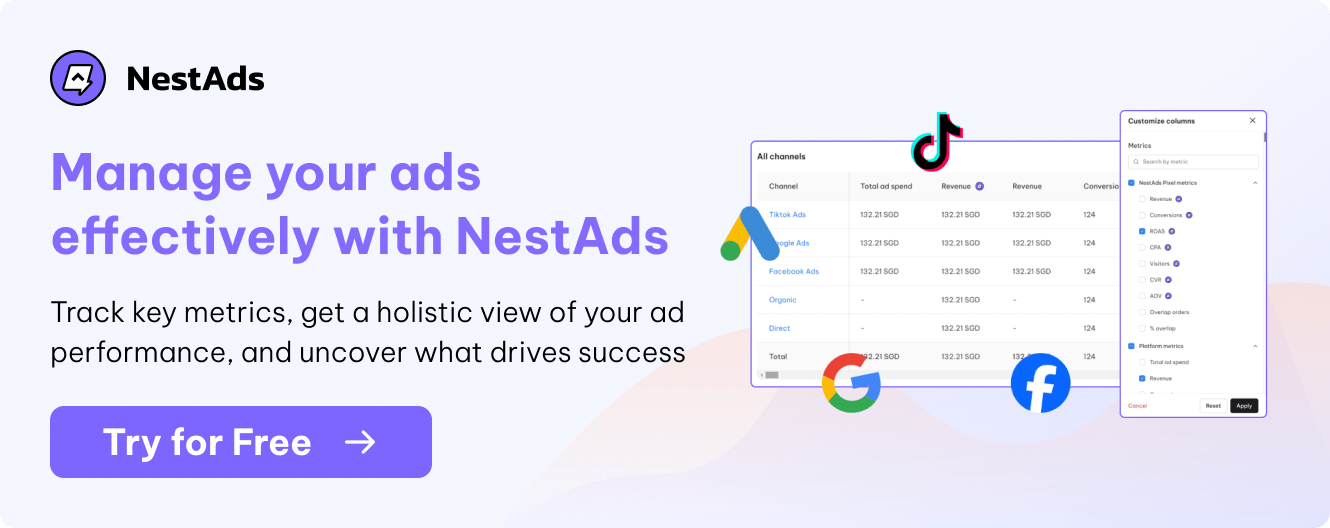
Setting bidding smartly
Along with other factors like ad quality, bidding strategies is also a factors that determines the position of your ad on the results page.
Based on my observations of e-commerce campaigns, here are three bidding types that are easy to set up and can still deliver strong results for your store:
| Key features | Purpose | Best for | |
| Manual CPC | Manually set bids for individual keywords/ads | Direct control over cost per click | Precise budget control, small campaigns |
| Target ROAS | Automatically adjusts bids to hit a target ROAS | Maximize revenue based on spend | Maximizing revenue, performance-driven goals |
| Maximize Conversions | Automatically sets bids to get the most conversions within budget | Increase total conversions | Driving conversions without manual adjustments |
In terms of bidding strategies, setting them at the right time with the right target is what matters. If you establish your target ROAS or CPA too early, it can severely impact your account’s performance.
Besides, setting your target ROAS too high or your target CPA too low can suspend ad spending altogether. As a result, this will reduce the total number of conversions and result in lower revenue. In contrast, setting a low target ROAS or a high target CPA may cause missed opportunities, ultimately leading to overspending on Google Ads.
💡Pro tips to set bidding
- Delay setting targets: Wait at least 3-6 months before setting Target ROAS or Target CPA to ensure you’re satisfied with the campaign’s performance. Setting too early signals Google to maintain the current results, limiting potential improvements.
- Stick to your targets: Once you set a Target ROAS or Target CPA, don’t adjust it for at least 30 days, even if performance goes down at first. This allows time for results to stabilize before making changes.
- Monitor for stability: You should keep your conversion metrics stable, fluctuating no more than 20% over a 3-4 week period. Consistency in performance is key before setting a specific bidding strategy.
Optimize shopping product feed
A shopping product feed contains detailed information about your products, which you submit to Google Ads to create product listings that show up in Google Shopping and relevant search results.
The success of a Google Shopping campaign heavily relies on the quality of your product feed. To really make your ads shine, it’s crucial to optimize your Google Shopping data feed. Here’s why it matters and how you can improve it:
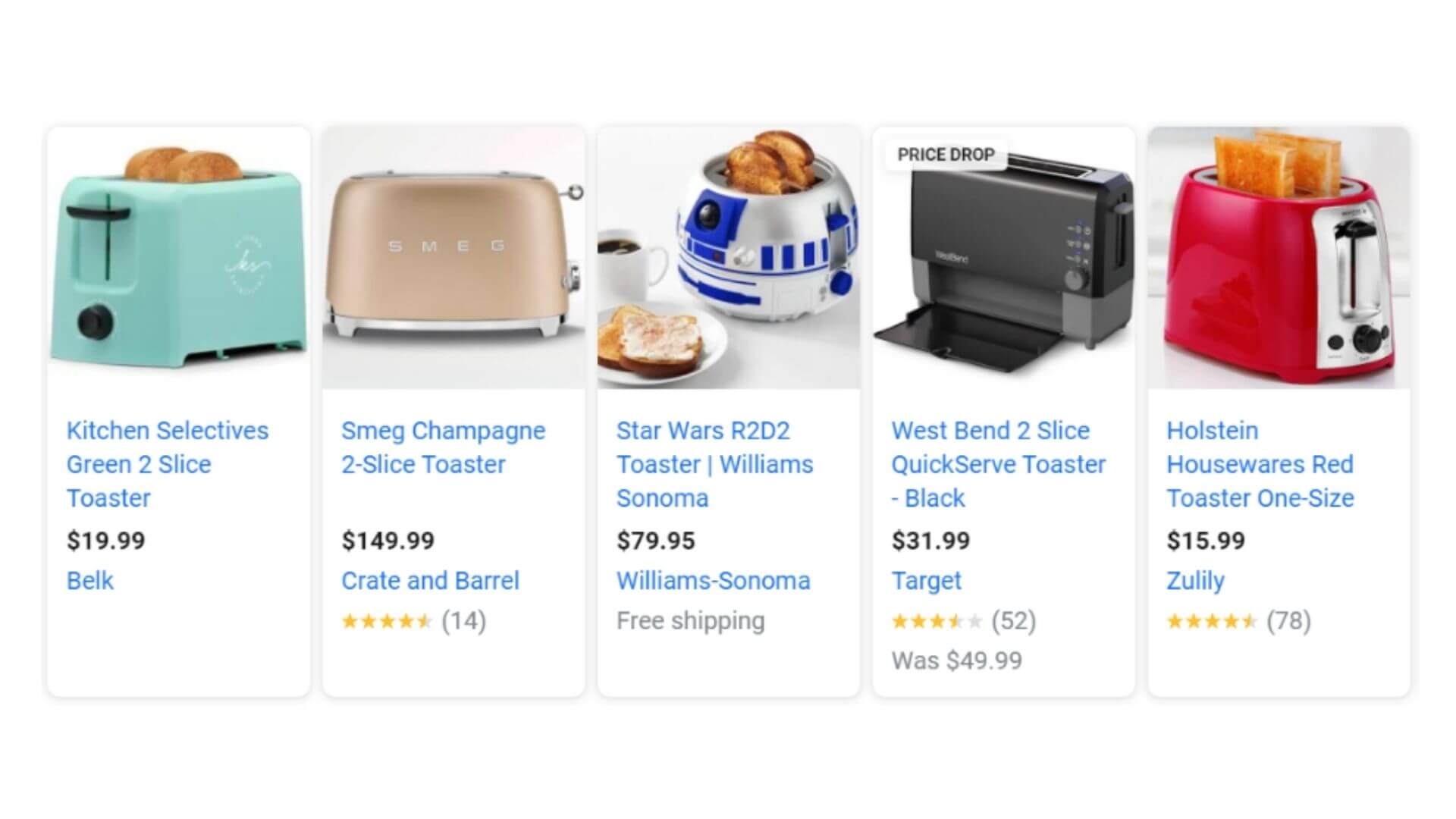
💡Pro tips
- Craft clear and keyword-rich titles: Write concise and descriptive product titles that include relevant keywords and brand names. Include key features and modifiers and keep your titles under 150 characters for optimal display. Here’s a simple formula to follow: [Brand] + [Product Name] + [Key Features] + [Modifiers] + [Size/Color/Model]
- Prioritize high-quality images: Product images should be high-resolution, clear, and relevant to the product, as they significantly impact purchasing decisions. A tip for you, follow Google’s image requirements and include relevant keywords in image titles and alt text to improve SEO.
- Maintain accurate and secure URLs: Double-check that the URLs you provide lead directly to the correct product landing page. Always use secure URLs (https://) to ensure compatibility with Google Shopping and avoid misleading your customers.
Target location and language
Effective location and language targeting in Google Ads helps your ads reach the most relevant audience by aligning with their geographic and linguistic preferences.
This level of precision boosts ad performance, maximizes ROI, and increases conversion rates. By tailoring your messages to the needs and preferences of users in specific regions and languages, you can connect more meaningfully with your audience.
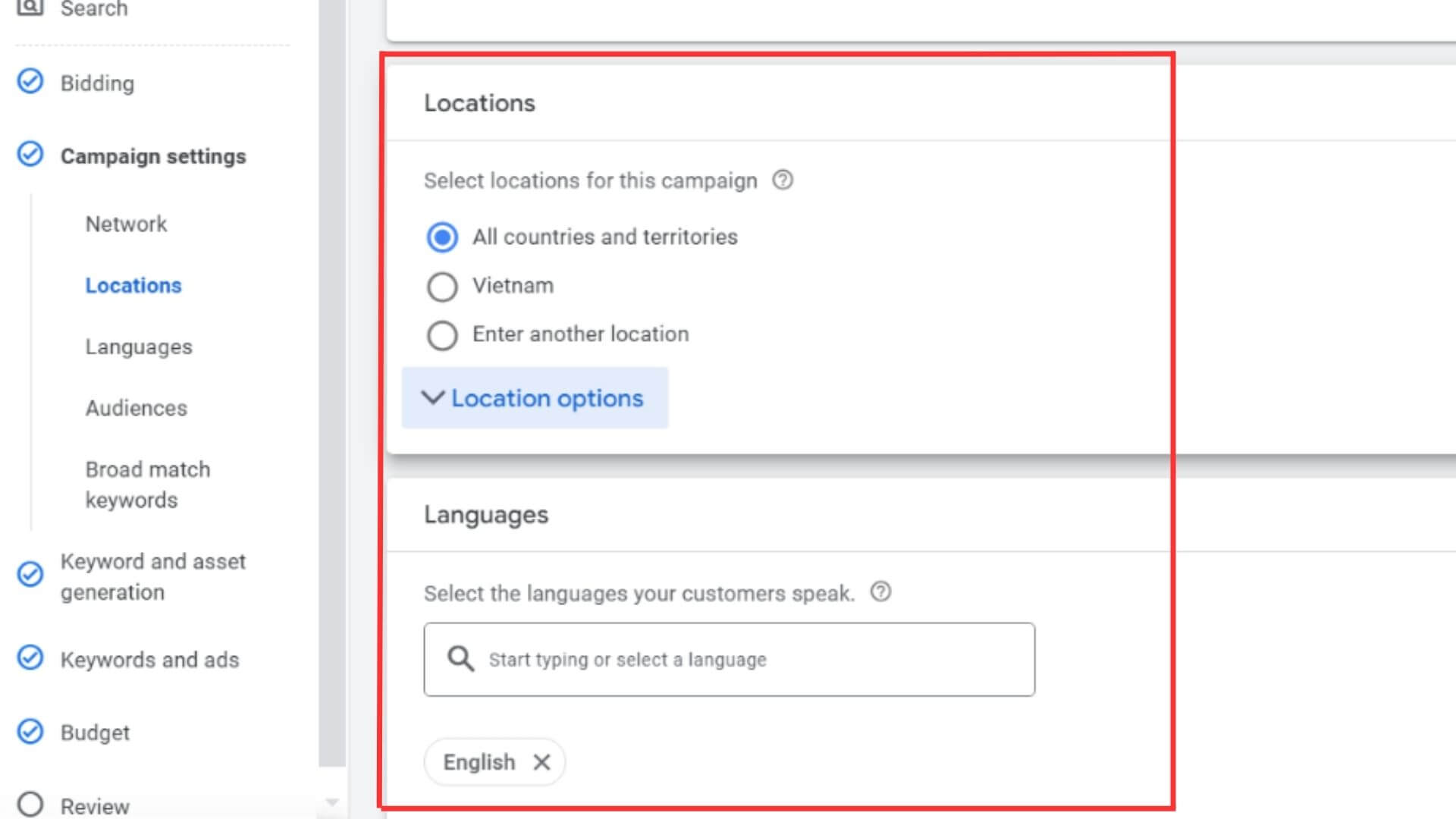
Pro tips
- Adjust bids by location: You can apply bid adjustments to optimize costs based on location performance. For instance, increasing bids for high-performing areas and decreasing for lower-performing ones to manage CPA effectively.
- Utilize distinct ad groups: Set up separate ad groups for each language you aim to target within your campaign. This approach enables you to custom ad messaging and keywords for each language for relevance and boosting engagement.
Optimize for mobile
Did you know that 61% of smartphone owners are searching from their devices every single day? According to Google research, consumers are spending over 15 hours a week just researching on their phones!
With so many people using smartphones, it’s really important to optimize your ads for mobile users. From my experience, doing this can lead to higher click-through rates and better conversions.
One of the first steps I recommend is optimizing your image ads. Here are some key requirements from Google that can help you get started:
Pro tips to optimize ads for mobile
- Use mobile-friendly keywords: The keywords you choose should align with mobile users’ search habits, which are often shorter and more conversational. Tools like Google Keyword Planner can help find these keywords and negative keywords to exclude irrelevant traffic.
- Choose effective ad formats: Ad formats need to be responsive. Each format serves different purposes and should be chosen based on your goals and products.
Leverage AI-powered tools
Optimizing Google Ads with AI can boost campaign efficiency and performance while minimizing manual tasks.
And just only AI-driven tools in Google Ads already help maximize return on investment by automating bid strategies, targeting, and creative development, making your campaigns more effective and streamlined.
💡Pro tips to leverage AI-powered tools
- Smart bidding: This strategy employs machine learning to adjust your bids for each Google Ads auction, aiming to maximize conversions or meet your target ROAS. When you automate the bidding process, your ads are displayed in optimal positions at the right times, eliminating the need for continuous manual adjustments.
- Google Smart Campaigns: Smart Campaigns automatically generate and oversee ads considering your business goals and advertising budget. Thereby, they enhance ad placements, targeting, and bidding to deliver superior results.
- Responsive Search Ads (RSAs): You can use RSAs to experiment with various headlines and descriptions, and then determine which ones obtain the best results.
- Dynamic Search Ads: This feature automatically generates landing pages and ad headlines based on your website’s content. More than just that, even if users search for keywords you haven’t explicitly targeted, your ads remain highly relevant to their queries.
Use auto-apply for recommendations
Google’s optimization suggestions are categorized into different groups, such as ads and assets, automated campaigns, etc. Each assigned a unique score that influences the overall optimization score of your accounts.
To streamline manual campaign management, you can have Google automatically apply some of these optimizations. I suggest these tips for auto-optimizations:
- Remove keywords that closely match others in the same ad group.
- Eliminate keywords with no impressions over a specified period.
- Adjust keyword bids to match ‘top of page’ bids.
- Prioritize top-performing ads over evenly rotating all ads in the same ad group.
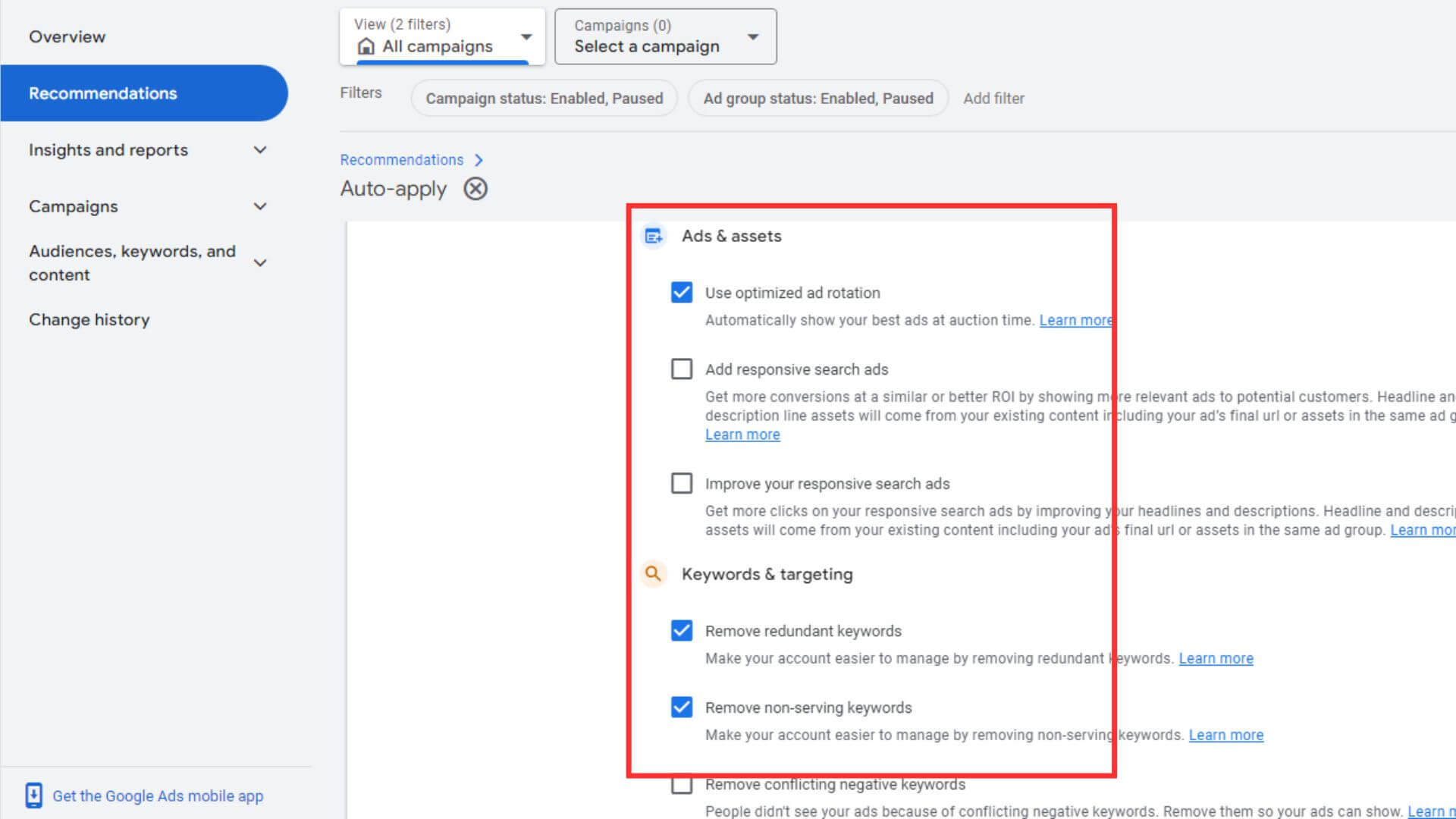
Enhance personalization through audience segments
In the past, marketers primarily relied on keywords and location targeting. But today, Google offers a wide range of audience options across search, performance max, display, video, and demand gen campaigns for you to optimized targeting.
You can apply audiences using both the observation and targeting settings. It’s a good idea to start with the observation setting, and once enough data is collected, switch to targeting.
By adding the following audience types to your campaigns and ad groups, you can sharpen your focus on reaching your target audience through search:
- Custom audience: You can create custom audiences based on various signals such as interests, behaviors, browsing history (URLs), and app usage. Think of targeting competitor brands, industry-relevant websites, apps, or recent Google searches.
- RLSAs (Remarketing lists for search ads): It’s important to set up separate ad groups or campaigns and keep RLSA audiences distinct from custom, in-market, or demographic-based audiences.
- In-market audience: You can explore available options by heading to the Audiences tab in your Google Ads campaigns. Select Edit Audience Segments > Browse tab, and check out the In-Market Audiences section.
Implement exclusions
Regardless of search campaigns or Performance Max, exclusions play a critical role in maintaining an effective campaign structure. These exclusions could include negative keywords, specific audience exclusions, brand exclusions, geotargeting exclusions, or placement exclusions.
Without these exclusions, your ads might be shown to the wrong audiences, appear alongside inappropriate content, or be triggered by irrelevant search terms. This can waste your advertising budget and diminish campaign effectiveness.
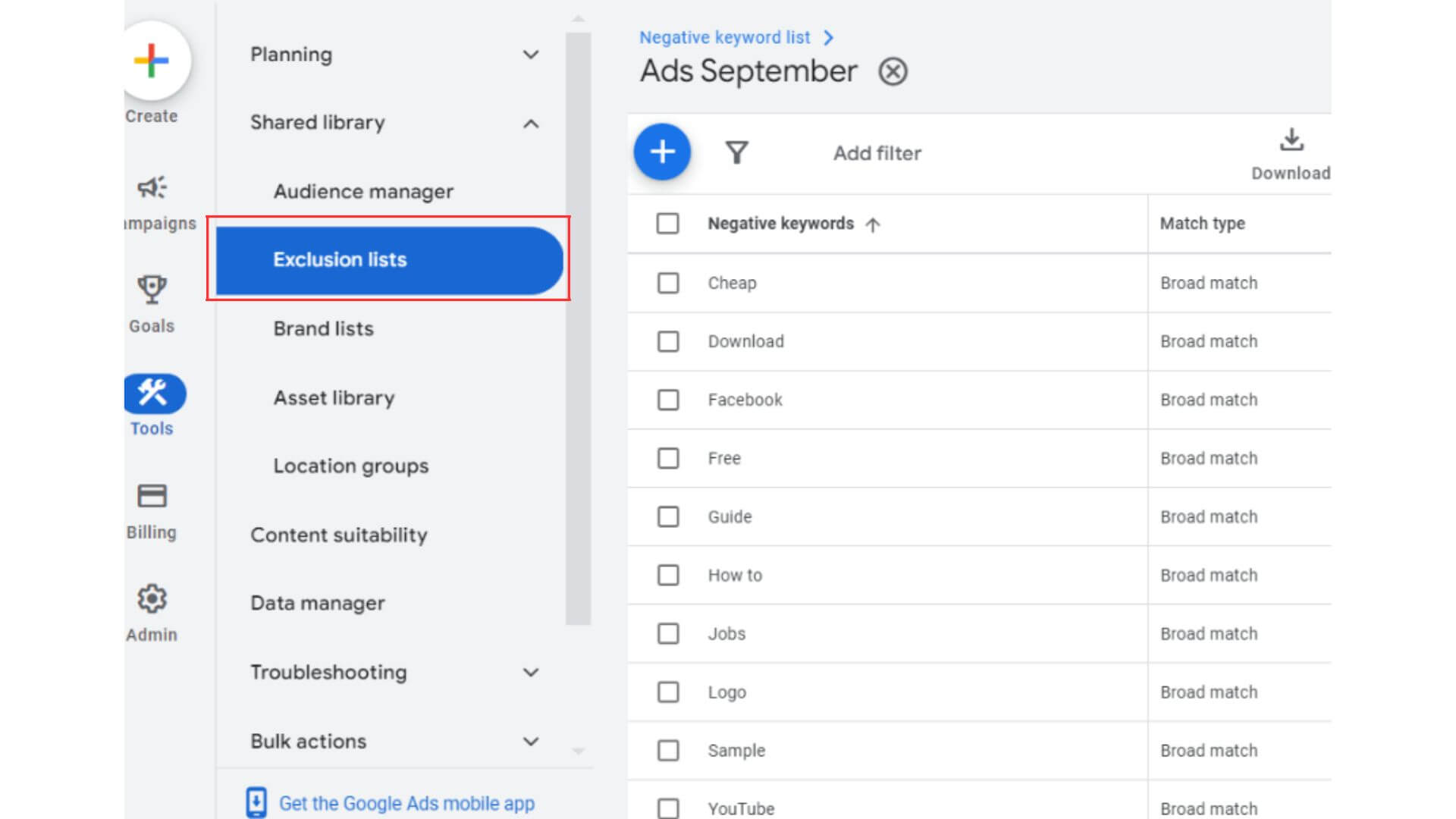
Boost your Google Ads performance with NestAds
Hopefully, you can withdraw something from the 9 strategies in Google Ads for eCommerce we’ve compiled in this blog. Applying these strategies effectively can improve your campaign’s performance. However, to maximize results, it’s essential to track your ads and adjust regularly. Then, you may know what’s happening with customers and your advertising efforts.
And to facilitate your tracking process, the easiest way is to employ a robust tool. Choose a tool that provides accurate data and easy analysis so that you can improve productivity and campaign effectiveness.
So I think NestAds is a good fit! Especially, it uses a unique pixel to capture first-party data directly from your server. So it avoids disruptions from ad blockers and browser limitations to give you the most accurate and reliable data.
